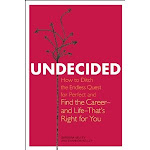Right, I'm starting the new year by cleaning the proverbial closet.... and breaking a lot of blogging rules.
Nonetheless.
I have been intending to post these linx to several articles that, when taken together, might give us a little more insight as to where journalism is headed. Or maybe not. Good reads, anyhow.
Erin Rosa, who's been a reporter for five years,
writes in Columbia Journalism Review, that she finds new media to be alive with new opportunities. She writes:
"For young reporters like me, the Internet is the primary medium for news content, and it is already leading to a new and inclusive form of journalism rooted in public participation. Although cynics like to say that the craft is a dead end for both young reporters and veteran writers alike, I think it’s an exciting time to be a journalist."Also from CJR comes this excellent
enterprise piece by Bree Nordenson on the information overload that is the product of today's mediascape. Information is everywhere, ours for the asking. Corralling it, however, is one of the problems. As Nordenson tells us, rather than yielding an American public that is
more informed, research has shown that in the face of too much information, the reverse is true.
From the piece:
“The tragedy of the news media in the information age is that in their struggle to find a financial foothold, they have neglected to look hard enough at the larger implications of the new information landscape—and more generally, of modern life. How do people process information? How has media saturation affected news consumption? What must the news media do in order to fulfill their critical role of informing the public, as well as survive? If they were to address these questions head on, many news outlets would discover that their actions thus far—to increase the volume and frequency of production, sometimes frantically and mindlessly—have only made things more difficult for the consumer."
This one is for Lotta: A year-old media bistro
interview with NYU journalism prof Adam Penenberg, who talks about achieving the balance between digital skills and journalism fundamentals, when it comes to j-school. In response to a question about how citizen journalism and blogging are changing journalism, he replies:
"Citizen journalism certainly has its place. After the bombings in Spain, witnesses posted pictures and blog entries within minutes. NY 1, our local news station, solicited pictures of a tornado that ran through Brooklyn, and posted some of them from their viewers. This is all a tremendous addition to journalism. But it won't replace journalists or journalism. Most blogging is analytical by nature. It is symbiotic to the news media it loves to hate. Without the news -- which someone has to go out and get -- there wouldn't be much material for bloggers to mull. So little blogging actually breaks news, it merely amplifies what already exists. I don't say this as a criticism. I think it's wonderful that news consumers can share their insights and criticisms of media with their own readerships. But bloggers won't replace journalists, just like TV news reporters didn't replace print journalists."It takes an enviable amount of skill and experience to write a truly good magazine feature or tight news article. They offer an experience you simply can't replicate on a blog. You can ask a bevy of people to act as citizen journalists to research a story, but that doesn't mean that the information will be good. And let's face it: few of us have the luxury of working for free. I can assure you that I do far better work when I am being paid than if I'm doing it pro bono. How about you?"
And finally,
an
oldie but goodie from Eric Alterman, writing in the Nation on the future of journalism in the digital age. The article predates jlinx -- he wrote the piece six months ago. It was pretty depressing at the time. Since then, things have only gotten worse.
Love his lead:
"Spend some time on the "future of news" conference circuit, as I have recently, and believe me, you'll need a drink and perhaps a Prozac. The flight of readers and advertisers to the web has led to an unprecedented assault on stockholder value, making newspapers the investment equivalent of slow-motion seppuku."Seppuku? Look it up. bk






